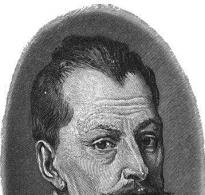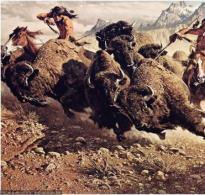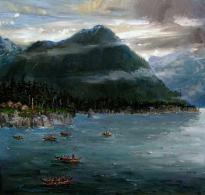Connection of modern geography with other sciences. Geography as a science Modern geography with other sciences
There is no science absolutely isolated from other knowledge. All of them are closely intertwined with each other. And the task of any teacher or lecturer is to reveal these intersubject relationships as much as possible. In this article, we will examine in detail the connections of geography with other sciences.
Inter-scientific relations - what is it?
Interscientific (or interdisciplinary) connections are the relationships between individual disciplines. In the course of the educational process, they must be established by the teacher (teacher) and the student. The identification of such links provides a deeper assimilation of knowledge and contributes to their more effective application in practice. Therefore, the teacher needs to focus special attention on this problem in the study of any science.
Identification of interdisciplinary connections is an important factor in building a meaningful and high-quality education system. After all, their awareness by the student allows him to more deeply know the object and tasks of a particular science.
Sciences that study nature
The system of sciences studying nature includes physics, biology, astronomy, ecology, geography and chemistry. They are also called natural scientific disciplines. Perhaps the main place among them belongs to physics (after all, even the term itself is translated as "nature").
The relationship of geography with other sciences that study nature is obvious, because they all have a common object of study. But why, then, is it studied by different disciplines?
The thing is that knowledge about nature is very multifaceted, it includes many different sides and aspects. And one science is simply not able to comprehend and describe it. That is why several disciplines have been historically formed that study various processes, objects and phenomena occurring in the world around us.
Geography and other sciences
Interestingly, until the 17th century, the science of the Earth was unified and integral. But over time, as new knowledge was accumulated, the object of its study became more and more complicated and differentiated. Soon biology broke away from geography, and then geology. Later, several more earth sciences became independent. At this time, on the basis of the study of various components of the geographical shell, ties between geography and other sciences are formed and strengthened.
Today, the structure of geographical science includes at least fifty different disciplines. Each of them has its own research methods. In general, geography is divided into two large sections:
- Physical geography.
- Socio-economic geography.
The first studies natural processes and objects, the second - the phenomena that occur in society and the economy. Often the connection between two narrow disciplines from different sections of the doctrine may not be traced at all.
On the other hand, the links between geography and other sciences are very close. So, the closest and "native" for her are:
- physics;
- biology;
- ecology;
- mathematics (in particular, geometry);
- story;
- economy;
- chemistry;
- cartography;
- the medicine;
- sociology;
- demographics and others.
Moreover, at the junction of geography with other sciences, completely new disciplines can often be formed. So, for example, geophysics, geochemistry or medical geography arose.
Physics and geography: connection between sciences
Physics - this, in fact, is pure. This term is found in the works of the ancient Greek thinker Aristotle, who lived in IV-III Art. BC. That is why the connection between geography and physics is very close.

The essence of atmospheric pressure, the origin of wind, or the features of the formation of glacial landforms - it is very difficult to reveal all these topics without resorting to the knowledge gained in physics lessons. Some schools even practice conducting in which physics and geography are organically intertwined.
The connection of these two sciences within the framework of school education helps students to better understand the educational material and concretize their knowledge. In addition, it can become a tool for schoolchildren to "adjacent" science. For example, a student who previously did not get along very well with physics may suddenly fall in love with it in one of the geography lessons. This is another important aspect and the benefits of interdisciplinary connections.
Biology and geography
The connection between geography and biology is perhaps the most obvious. Both sciences study nature. That's just biology focuses on living organisms (plants, animals, fungi and microorganisms), and geography - on its abiotic components (rocks, rivers, lakes, climate, etc.). But since the connection between living and non-living components in nature is very close, this means that these sciences are a priori connected.

At the intersection of biology and geography, a completely new discipline has been formed - biogeography. The main object of its study is biogeocenoses, in which biotic and abiotic components of the natural environment interact.
These two sciences are also united by the question. In search of the correct answer to it, geographers and biologists consolidate all their efforts.
Ecology and geography
These two sciences are interrelated so closely that sometimes the subject of their study is even identified. The solution of any environmental problem is simply impossible without referring to the aspects of geographical science.
The connection between ecology and physical geography is especially strong. It resulted in the formation of a completely new science - geoecology. The term was first introduced by Karl Troll in the 1930s. This is a complex applied discipline that studies the structure, properties and processes that take place in the human environment, as well as other living organisms.
One of the key tasks of geoecology is the search and development of methods for rational nature management, as well as the assessment of the prospects for sustainable development of specific regions or territories.
Chemistry and geography
Another discipline from the class of natural sciences, which has rather close ties to geography, is chemistry. In particular, it interacts with soil geography and soil science.

Based on these connections, new scientific branches have arisen and are developing. This is, first of all, geochemistry, hydrochemistry, atmospheric chemistry and landscape geochemistry. The study of some topics of geography is simply impossible without the appropriate knowledge of chemistry. First of all, we are talking about the following questions:
- distribution of chemical elements in the earth's crust;
- the chemical structure of the soil;
- soil acidity;
- chemical composition of waters;
- salinity of ocean water;
- aerosols in the atmosphere and their origin;
- migration of substances in the lithosphere and hydrosphere.
The assimilation of this material by students will be more effective in the conditions of integrated lessons, on the basis of laboratories or chemistry classrooms.
Mathematics and Geography
The relationship between mathematics and geography can be called very close. So, it is impossible to teach a person to use a geographical map or a plan of the area without elementary mathematical knowledge and skills.

The connection between mathematics and geography is manifested in the existence of so-called geographical problems. These are the tasks:
- to determine distances on the map;
- to determine the scale;
- to calculate the height of a mountain from temperature gradients or pressure gradients;
- for demographic calculations and the like.
In addition, geography in its research very often uses mathematical methods: statistical, correlation, modeling (including computer) and others. If we talk about economic geography, then mathematics can be safely called its "half-sister".
Cartography and geography
No one should have the slightest doubt about the connection between these two scientific disciplines. After all, a map is the language of geography. Without cartography, this science is simply unthinkable.
There is even a special research method - cartographic. It consists in obtaining the information necessary for the scientist from various maps. Thus, the geographic map is transformed from an ordinary product of geography into a source of important information. This research method is used in many studies: in biology, history, economics, demography, and so on.
History and geography
"History is geography in time, and geography is history in space." Jean-Jacques Reclus expressed this unusually precise idea.

History is connected exclusively with social geography (social and economic). So, when studying the population and economy of a particular country, one cannot ignore its history. Thus, a priori, a young geographer must understand in general terms the historical processes that took place in a certain territory.
Recently, there have been ideas among scientists about the full integration of these two disciplines. And in some universities, related specialties "History and Geography" have long been created.
Economics and geography
Geography and economics are also very close. In fact, the result of the interaction between these two sciences was the emergence of a completely new discipline called economic geography.
If for economic theory the key question is "what and for whom to produce", then economic geography is primarily interested in something else: how and where are certain goods produced? And this science is also trying to find out why the production of this or that product is established in this (specific) point of the country or region.

Economic geography originated in the middle of the 18th century. Her father can be considered the greatest scientist M.V. Lomonosov, who coined this term in 1751. At first, economic geography was purely descriptive. Then the problems of distribution of production forces and urbanization entered the sphere of her interests.
Today, economic geography includes several industry disciplines. It:
- industry geography;
- Agriculture;
- transport;
- infrastructure;
- tourism;
- geography of the service sector.
Finally...
All sciences are related to each other to a greater or lesser extent. The connections of geography with other sciences are also quite close. Especially when it comes to disciplines such as chemistry, biology, economics or ecology.
One of the tasks of a modern teacher is to identify and show the student interdisciplinary connections using specific examples. This is an extremely important condition for building a quality education system. After all, the effectiveness of its application for solving practical problems directly depends on the complexity of knowledge.
Initially, like any of the scientific disciplines, at the initial stage of its development, geography was merged with other branches of social life (syncretism) - with philosophy, with mythology, etc. Gradually, its isolation as scientific knowledge takes place. However, in the early stages of its development, Geography was also closely connected with other scientific knowledge: travelers described new lands in terms of nature, agriculture, ethnography, etc. Those. geography developed together with biology, zoology, ethnography, etc., and the scientists of that time were "encyclopedic scientists." Transitional disciplines emerged as geobotany, biogeography, historical geography, etc. Thus, the processes of differentiation of science (reverse integration processes at the present time) received their development.
In our time, due to the progressive complication of the system of scientific knowledge, both geography in general and each geographical discipline in particular interact with a huge number of different sciences.
All the views of geographers have always been influenced by the methodological guidelines of other sciences. In general, three sources of the strongest impacts can be identified:
1. Natural sciences, where physics came to the fore in terms of developing the most convincing paradigm of scientific explanation (the highest level of theorization of knowledge).
2. Sociology and related sciences.
3. History - which had a significant impact on the thinking of geographers (an introduction along with spatial thinking and temporal or historical).
The nature of the Earth is organized at least at three levels simultaneously: complex, component and elementary.
The latter, the level of material bodies and processes, is also studied by other natural sciences. The geographer studies a certain component as if by itself, in interconnection with other components of the geographic shell, while other natural sciences study their patterns of functioning and development. However, in the future, it became necessary to have information about the nature and pace of the processes, to establish the relationship between them and the factors that affect them. There was a change from the descriptive nature of geography to the essential one, in which the need arose for in-depth knowledge specifically about the processes (example: not just to describe the leveling surface as a result of abrasion, but to know the nature and pace of development of coastal destruction processes).
Geography enriches the social sciences with new materials and ideas. The study of specific manifestations of the interactions of society and nature, both on a regional and global scale, is of general methodological significance, although geographers will play the main role in the study here. The geomethod is considered by the philosopher B.M. Kedrov as a methodological role of geography.
The peculiarity of the interaction of geography with other sciences was as follows. Almost until the middle of the 20th century, there was a close connection between geography and history. This connection was displayed at many levels of teaching geographical disciplines. Recently, the links between geography and environmental knowledge have grown markedly, more and more attention is being focused on the interaction of society with the environment.
Recently, there has also been an active mathematization of geographical disciplines. Important incentives here are the development of space geography and the need for geographical monitoring of the environment, the development of international statistical systems and the relevance of integrating demographic, socio-economic and political information. The need to build complex mathematical and cartographic models for the development of the NTC and socio-economic territorial complexes also requires the use of a mathematical apparatus.
There is a close connection between geography and computer science - the development of GIS is a vivid example of this. It was at the intersection of ethical sciences that the possibility arose of automating cartography, processing space information, creating geoportals and spatially distributed geographic data banks.
The most important result of the informatization of geographical knowledge is the gradual consolidation, and in the future, the integration of geographical disciplines based on the information paradigm. Modern research must certainly be carried out on a general scientific basis, which is directly related to computer science, and through it to mathematics, cybernetics, a systematic approach and synergetics.
The creation of databanks and GIS acquires basic significance for such integration of geographical knowledge. It is the generality of the construction of the latter for any theory that can become a new common program for all geographical disciplines.
At the same time, computer science in a number of cases makes it necessary to seriously correct the very methodological principles of geographical knowledge. Geographical problems of classification, taxonomy, zoning, when solving them on an information basis, require rethinking and further improvement of the methodological and theoretical coverage of geography.
New approaches closely related to the theory of informatization, system analysis and synergetics have led to the awareness of interrelated geographical processes: spatial organization, spatial management and self-management or self-organization of systems. These processes can be found in any geographical process - population migration, land use, location of industries, etc.
It must be emphasized that geography is a science with a high ideological potential, closely connected with the entire system of culture. Geography largely forms the public consciousness (geographical picture of the world).
1.2. The connection of the methodology of teaching geography with other sciences.
Any academic subject is a pedagogical "projection" of science, built taking into account the age characteristics of schoolchildren and their previous training, as well as the specifics of the social and natural environment in which schoolchildren live.
The connections between the methods of teaching geography and the geographical sciences are of particular importance in developing the content of school geography, i.e. in resolving the issue of what is the range of scientific geographical knowledge and skills that schoolchildren should master in the process of teaching geography. Designing and improving the content of geographical education is a task of enduring importance and significance. It is significant that one of the central tasks of improving the content of geographical education is to more fully reflect in it the current level of development and achievement of the system of geographical sciences. In the modern school, the basics of geographical science are studied, and not scientific geography itself. The teaching aids and methods of working with them are also largely determined by the methods of research in geographical science. For example, the cartographic method of research, which is most specific to geography, is widely used in school education in the form of a system for working with maps. In the upper grades, work with economic and demographic statistics occupies a prominent place, which corresponds to the statistical method of research, which is so important for economic geography. Field methods for studying scientific geography in school education are represented by educational excursions and observations. In all courses of school geography, the territorial, spatial approach inherent in geographical science to the consideration of objects and phenomena of nature and society is widely used.
Relationships between teaching methods and didactics. Didactics forms the general scientific basis of the methodology of all academic subjects. The methodology of teaching geography is developing in accordance with the laws, patterns and principles justified by didactics. The content of school geography is developed on the basis of the theory of the content of general and polytechnic education in a modern general education school, and the system of methods for teaching geography and the requirements for them correlate with didactic classifications of teaching methods in general. The geography lesson implements the most important provisions of didactics concerning this main form of organization of education in a modern general education school, etc. The connection between methodological science and didactics is dialectically complex: the methodology of teaching geography not only relies on the general provisions of didactics, but also enriches the latter, revealing the features and ways of successfully forming knowledge and skills, developing and educating students in the process of teaching geography. Didactics as a general theory of the learning process cannot develop successfully without generalizing the specific patterns of teaching in all academic subjects. Didactics, for example, included such results of research on the methodology of teaching geography, such as 1) methods for objectively testing and evaluating students' knowledge and skills, 2) conditions and ways of developmental education, 3) general approaches to determining the system of worldview ideas and ways of their formation among schoolchildren etc.
Relationships between the methods of teaching geography and psychology. The methodology of teaching geography has close ties with psychology. These connections are due to the fact that the laws discovered by psychology help to find the most effective means, methods and techniques for teaching, educating and developing the child's personality, to construct a pedagogically competent process of forming the foundations of geographical thinking in students. Indeed, teaching geography will not be successful if the teacher fails to use the latest achievements of psychology in studying the cognitive activity of children. In recent years, methodological research has increasingly relied on data from general, psychological and developmental psychology, as a result of increased attention to how the student learns. Methodological science uses the data of psychology both indirectly, through the laws and principles of didactics, and directly. The psychological theories of N.A. Menchinskaya, D.I. Bogoyavlensky, P.Ya. Galperin, N.F. Talyzina, E.N. Kabanova-Meller and others. The ideas and principles of the theory of developmental education put forward by L.S. Vygotsky, as well as his students and followers. According to this theory, teaching should focus not on yesterday, but on the future of the student's development; properly organized training should always stay ahead of development, go ahead of it and serve as a source of new development.
As the methodology for teaching geography develops, its connections with logic, cybernetics, and neurophysiology deepen.
1.3. Goals of teaching geography.
A strict definition of learning objectives is of fundamental importance for solving the whole complex of problems of methodology and psychology of any educational subject, including geography. The objectives, content, methods and techniques, organizational forms, means, as well as the general orientation of the process of teaching geography depend on the goals of teaching.
In terms of the breadth and variety of learning objectives, geography occupies one of the leading places among other subjects in the modern general education school. The goals of teaching geography are traditionally grouped into the following three groups:
1.EDUCATIONAL OBJECTIVES:
To give students knowledge of the basics of modern geographical science, cartography, geology, etc., to reveal the scientific foundations of nature conservation and rational nature management;
Contribute to the environmental, economic and polytechnic education of schoolchildren;
To equip schoolchildren with methods available to them for studying natural and social objects and phenomena;
To form a geographical culture among students, to prepare students for self-education in the field of geography and related sciences.
2. EDUCATIONAL GOALS:
to form students' dialectical views on nature as an objective reality that is in continuous formation, change, transformation and development;
To promote the moral and environmental education of schoolchildren, the formation of a humane, careful and responsible attitude towards the natural environment;
Contribute to labor education and career guidance, help in choosing a future profession and choosing a life path;
3. DEVELOPING GOALS:
Develop cognitive interests in geographical knowledge and problems of the state of the natural environment;
To promote the development in schoolchildren of such higher mental functions as meaningful perception, creative imagination, thinking in concepts, arbitrary memory, speech, etc.
To instill in schoolchildren a system of mental actions and operations (analysis, synthesis, comparison, classification, generalization, etc.), which allow them to successfully solve various problems of real life.
In foreign literature on the problems of methods of teaching geography, the formation of spatial representations, skills, or a set of geographical reactions is considered as the main goal of geographical education.
In our opinion, the formation of geographical thinking as a certain way of solving problems of the "man-nature-society" type in their territorial or spatial aspect should be considered as a strategic goal of geographical education. Geographical thinking in this sense is systemic, complex, spatial, scientific, dialectical, generalized thinking. It develops as children grow and gain experience about the world around them. From the point of view of the cultural-historical approach, geographical thinking is one of the highest mental functions
The goals of teaching geography are of an activity nature, that is, they can be achieved only in the process of educational and cognitive activity of the students themselves. The definition of learning objectives is directly related to the development of programs and the creation of textbooks, as well as to the organization of the process of teaching geography in the real conditions of a modern general education school.
Chapter 2. Studying the regional studies course in school geography.

... (in the territories at the place of residence, study), i.e. their locality within the framework of the so-called "small motherland". Therefore, in this study, at the forefront of environmental education and upbringing in the system of school geographical education is the local history principle, that is, a comprehensive comprehensive study of the “small motherland” 47, 49. In general, the regional focus of education ... 




Schoolchildren practically lack material on the significance of scientific prediction of possible changes in nature. Chapter 2. Methodological conditions for using the basics of geographic forecasting in the process of environmental training of schoolchildren in the course "Geography of Russia". 2.1. A model of the methodology for using geographic forecasting in the process of environmental training of schoolchildren with ...
Russia"). The material increases students' interest in geography, has a certain career guidance potential, and also instills in students an interest in reading books. 3. Methodology for the formation of knowledge about Russian explorers-travelers in the school course of geography Sedov" Geography Week in...
Geography and its subspecies. Like any science in the world, modern geography does not exist and does not develop separately, by itself. It is supplemented by knowledge from other sciences, and enriches them, in turn, with the achievements of learned geographers. Let's start with the fact that geography is divided into physical and socio-economic. Most often, cultural geography is additionally distinguished as a subsection of science, political geography, and some other, smaller branches.
Physical sphere in geographical science. Physical geography is very close to the natural sciences: physics, chemistry, biology, geology, cartography (that is, the science of displaying space using maps and models). Sometimes branches of geography in the scientific world are called sciences close to it - climatology, hydrology, oceanologists, cryology (that is, sciences that study purely climate, oceans, water, ice and glaciers of the Earth) and so on.
Closer to social sciences. Economic geography can already be included in the block of social and economic disciplines: it is close to economics, social science, urban studies (and this is the latest science of large cities on the planet and, in general, urban planning and urban development), the history of the national economy, the history of agriculture.
Politics, culture and military. The section of political geography is close to such sciences as sociology and political science, statistics, and often and much it intersects with such a discipline as history.
Today, scientists sometimes began to single out such a concept as cultural geography, which studies the characteristics of culture in various countries and regions. It is close to such humanities as cultural studies, linguistics, ethnology, ethnopsychology, for example. Scientists also mention military geography, which in a number of sciences is close to military history, military strategy and tactics, military statistics and other militaristic branches.
Geography for me has always seemed to be one of the first sciences on a level with mathematics and the same physics. Its significance is no less and in life it may well come in handy. But how does geography stand out from other sciences and what connections does it have with them?
Geography among sciences
It is known that any science is connected with the others. Geography is no exception. If you delve into its study, you can understand that it is associated with:
- physics;
- medicine;
- mathematics;
- biology;
- history;
- ecology;
- cartography;
- sociology and others.
Interestingly, the correlation of geography and some other sciences can cause the formation of an entirely new discipline. For example, geochemistry, geophysics and even medical geography.

Geography with physics and biology
We can say that physics is the desired science about nature. Without knowledge in the field of physics, it is difficult to explain the principle of the origin of wind, to explain the essence of pressure in the atmosphere, or even how the relief forms of a glacier are formed.
I'll move on to biology. The connection between these two sciences is the most obvious. After all, they are studying nature. The difference is that biology includes the study of the entire living world, while geography deals with its abiotic components. The combination of geography and biology is called biogeography. In fact, these are all sciences about nature, but with different directions.

Geographical connection with the sciences
I'll start with mathematics, it has a very close relationship with geography. After all, no one can learn how to use a map without the simplest knowledge in mathematics. The manifestation of the connection of these sciences lies in the calculation of the scale, the determination of any distance on the map, or the consideration of demographic indicators, etc.
Now I want to turn to history. It is connected with economic geography as well as social geography. To study the economy and population of a country, one cannot do without history.
Since we are talking about economics, I will analyze its connection with our science. There is even a dedicated discipline called economic geography. She analyzes various problems with the distribution of forces of production and also issues of urbanization.





